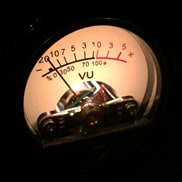『ムジカ新製品3種!! vol.2』で新製品pho60をご紹介しました。
今なぜpho60なのか?というお話です。
レコードには音の振動が溝に彫られて録音されているのですが
音がそのまま録音されているわけではありません。
低音は小さめに、高音は大音量で録音されています。

そのまま再生すると高音ばかりのキンキンした音ですので
逆の特性のフィルターを通します。

その結果、元の楽器の音と同じバランスになるのです。

現在この特性はRIAAと呼ばれ、
1954年に全米レコード協会が規格化したものです。
1960年以降のレコードは、ほぼRIAAです。
ではそれ以前はというと
各レコード会社によってまちまちの規格が使われていました。
次回に続きます。
Why do you use pho60?? vol.1
I introduced new product pho60 in
"Three sorts of MUSICA new products!! vol.2."
Is it necessary why to use pho60?
As for the analog disk, vibration of sound is recorded by the groove.
Sound is not recorded as it is.
bass is more smallish and treble is recorded to a loud sound.

When it reproduces then, it is the sound as which treble was emphasized.
Therefore, it lets the filter of the reverse characteristic pass.

As a result,
it becomes the same balance as the sound of the original musical instrument.

This characteristic is called RIAA now.
Recording Industry Association of America standardized in 1954.
1960 or later, analog disk is RIAA.
Before it, each standard was used in each record company.
To be continued


















